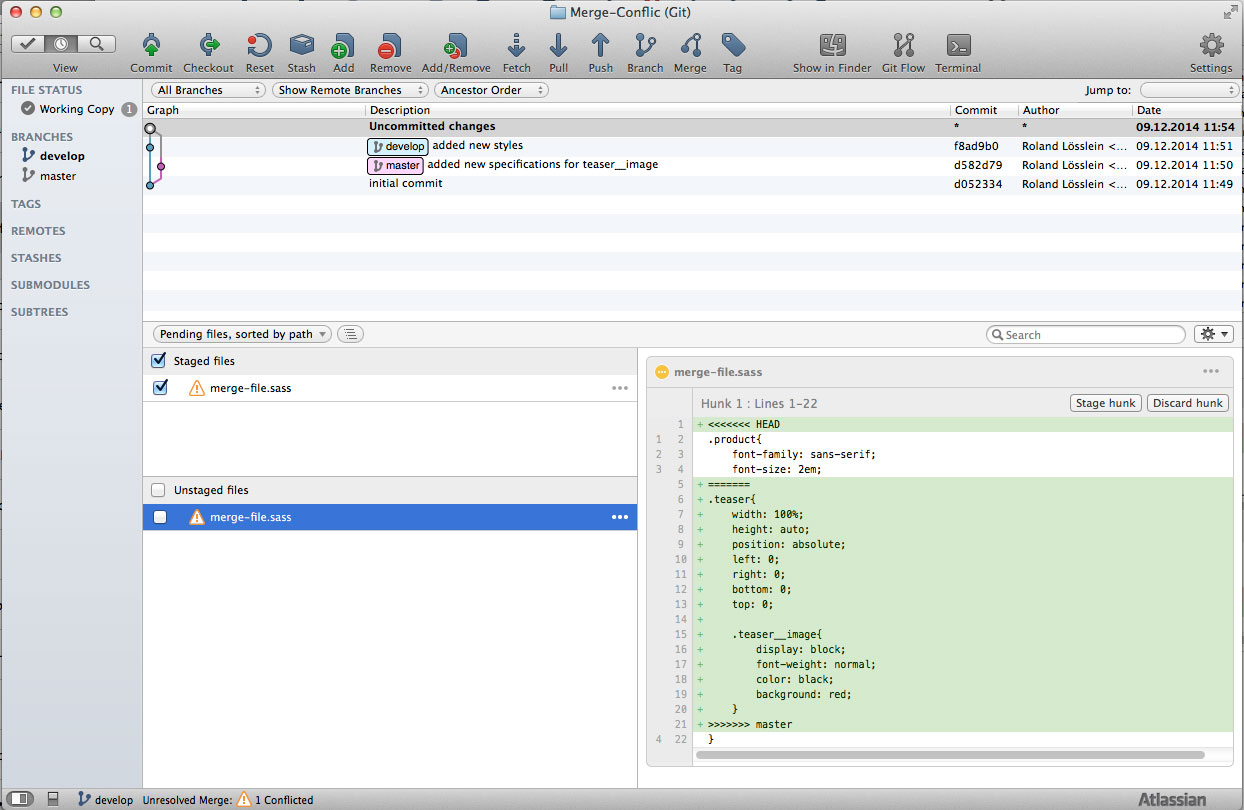


If you are not experienced with a command line, we highly suggest that you go through the Sourcetree path. One path assumes that you have experience using a command line interface, and the other path uses the Sourcetree graphical client. This is especially true if you currently "know just enough Git to be dangerous". This course assumes no previous knowledge of Git, but if you do have experience with it, you may find this course to be both useful and challenging. In this course, you will not learn everything there is to know about Git, but you will build a strong conceptual understanding of the technology, and afterward will be able to confidently dig deeper on any topic that interests you. You could also use Git to manage the many continuously improving revisions of that book that you are writing. It is a core component of DevOps, continuous delivery pipelines and cloud-native computing. It is used by most major technology companies, and is assumed knowledge for many modern programming and IT jobs. This allows the team to continuously improve its product. Git manages team files for large and small projects.
SOURCETREE RESOLVE CONFLICTS SOFTWARE
Git is open source software originally created by Linus Torvalds. (2) Commit the resolution just as you would commit any other change with the " git commit" command.The Version Control with Git course provides you with a solid, hands-on foundation for understanding the Git version control system. When you've successfully solved all conflicts, you need to do two more things:
SOURCETREE RESOLVE CONFLICTS FREE
We've compiled a list of merge tools in our free ebook. Especially in complex situations with multiple conflicts in the same file, a good tool can be of tremendous value. Note that there are lots of dedicated "Merge Tool" applications that help you with this process. git checkout -ours path/to/conflict-file.css (b) Alternatively, you can tell Git that you'll simply go with one of the edited versions, called "ours" or "theirs". When you're done, the file needs to look exactly as you want it to look. (a) You can simply open the file in an editor, search for the conflict markers (see above image) and make any necessary modifications. Your job now is to condition the file to its desired state. This helps you understand which edits were made - and even on which branches. In the concerned file, Git simply marks the areas that were edited in contradictory ways: It helps to realize that a conflict is nothing magical. In that case, Git has no way of knowing what's correct - you'll have to look at the changes and decide how you want the file to finally look. The most common situation when it cannot do this is when the exact same lines were edited in that file. Most modifications don't fall into this category: if two people just work on the same file, Git can most likely figure things out on its own. (3) Understand When & Why a Conflict HappensĬonflicts occur when the same file was changed in contradictory ways.

No changes added to commit (use "git add" and/or "git commit -a") All of the items in this category are in a conflict state and need to be dealt with: $ git status When calling "git status", you'll see a special Unmerged paths category. This makes it almost impossible to severely screw things up. With a simple " git merge -abort", you can always undo the merge and start over again. Above all, you need to realize that you cannot break anything: Git always allows you to go back to the state before the conflict occurred.


 0 kommentar(er)
0 kommentar(er)
